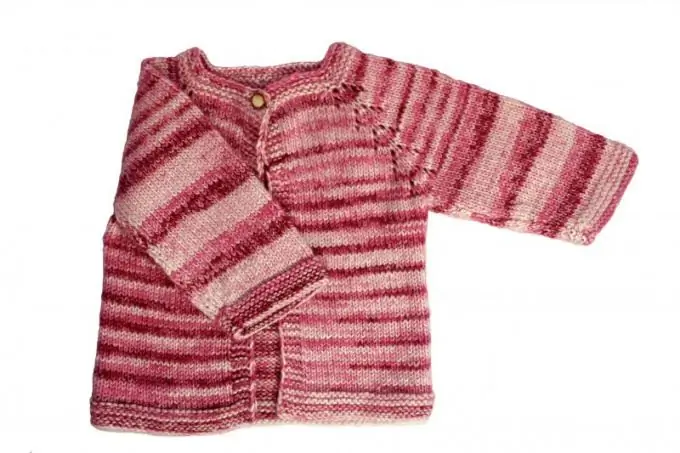The unsurpassed decorative effect of melange yarns is the sectional dyeing of the yarns in different colors. In certain areas of the canvas from this material, multi-colored stripes and stains alternate, tones and halftones smoothly flow into each other. With the help of melange, you can make an elegant product without additional decorations - reliefs, embroidery, appliqués and complex patterns.

It is necessary
- - melange yarn;
- - plain yarn;
- - 3 knitting needles;
- - paper;
- - pencil;
- - centimeter.
Instructions
Step 1
Tie a mélange yarn swatch to evaluate the sequence of colored patches. The melange pattern may vary depending on the length of the working row. For example, you can get wide stripes on a small pullover, and narrow stripes on bulky clothes.
Step 2
Try to model the appearance of the future product according to your preferences and body characteristics. So, vertical stripes are suitable for a plump woman, and horizontal stripes for a slender woman. You need to knit things from melange yarn in accordance with the pattern.
Step 3
For multi-colored contour lines, work from the hem of the bottom to the collar, or vice versa - from top to bottom. Vertical stripes are obtained by knitting parts from right to left. For example, cast on the knitting needles for one side of the back of the pullover and knit the fabric to the opposite side line.
Step 4
For knitting from melange, choose models of a simple silhouette and an uncomplicated canvas pattern. Optimal for such a material is considered to be the front or seamy surface (the main details of the cut), as well as an elastic band or garter stitch for planks. Simple knitting will favorably emphasize the sectional color of the yarns. Additional decorative elements will only overload the product.
Step 5
Use a solid companion yarn in a matching color if you don't like colorful knits. The texture and thickness of the working balls must match exactly.
Step 6
Try knitting a headdress of the original color. Make the bezel from multi-colored yarn, and the cap from plain. Tie a melange scarf to the hat, and make pompons or tassels from a companion ball to decorate the ends of the product.
Step 7
When making large canvases, the beauty of the melange may be lost. In this case, you can use the patchwork technique - fold a thing from separate fragments, make a unique decorative composition and connect it into a single whole with a crochet or knitting needles. For example, knit a rectangular blanket.
Step 8
The beginning of your work will be a life-size pattern of the product. Divide the template into the required number of fragments depending on your idea and skill level. You can make the components of the blanket square and rectangular, large or small; give them a simpler or more intricate shape. It is recommended for a beginner needlewoman to choose squares of average size and attach them to one another in the process of knitting.
Step 9
Tie the first piece of the blanket with two straight knitting needles, then type on the third knitting needle the edge loops of one of the sides of the part. Perform two connecting rows with the front stitch (from the "face" of the product - front loops, from the wrong side - purl loops). At the same time, small holes are formed on the border of the two fragments, which will play a decorative function.
Step 10
Start knitting the second part of the blanket. In the process of work, in each front row, the last loop of the working row and the edge loop of the finished adjacent part should be knitted together. Follow the pattern described above to complete the entire blanket.
Step 11
Be sure to have knitting patterns on hand (see step # 1). With their help, you can arrange multi-colored "patches" in a checkerboard pattern, diagonally, place colored components around a monochromatic center. When knitting from melange yarn, your main task is to control the overflow of the color palette in order to achieve the desired design.






